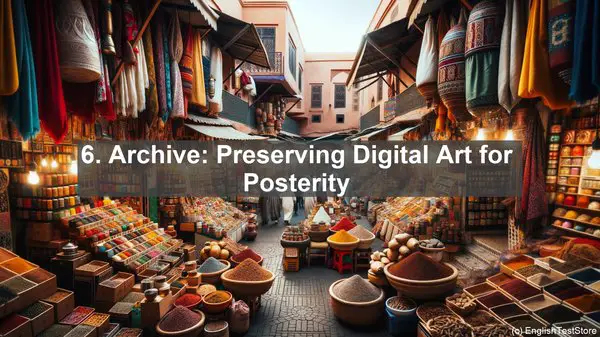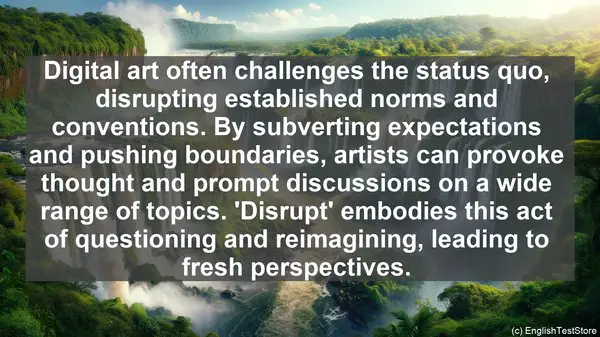Introduction: The Dynamic World of Digital Art
In today’s lesson, we’ll be exploring the fascinating realm of digital art and new media. As the digital landscape continues to evolve, so does the language we use to discuss it. By mastering these ten essential verbs, you’ll be equipped to engage in insightful conversations and analyze the ever-changing world of contemporary art.
1. Transcend: Breaking Boundaries in Art
Digital art has the unique ability to transcend traditional mediums. Artists can seamlessly merge photography, painting, and even sculpture in their creations. The verb ‘transcend’ encapsulates this idea of going beyond established boundaries, resulting in innovative and thought-provoking pieces.
2. Augment: Enhancing Reality through Technology
One of the defining characteristics of new media is its ability to augment reality. Through techniques like augmented reality (AR) and virtual reality (VR), artists can transform the viewer’s perception, adding layers of information or creating entirely new environments. ‘Augment’ captures this process of enriching and expanding the viewer’s experience.
3. Disrupt: Challenging Conventional Notions
Digital art often challenges the status quo, disrupting established norms and conventions. By subverting expectations and pushing boundaries, artists can provoke thought and prompt discussions on a wide range of topics. ‘Disrupt’ embodies this act of questioning and reimagining, leading to fresh perspectives.

4. Iterate: The Ever-Evolving Nature of Digital Art
Unlike traditional art forms, digital creations can be easily modified and updated. Artists can iterate on their work, refining and enhancing it over time. This iterative process, where each version builds upon the previous one, is at the core of digital art’s dynamic nature.
5. Interface: The Intersection of Art and Technology
In the digital realm, the interface becomes an integral part of the artwork. It’s not just about the visual elements but also the interactive and user experience aspects. The verb ‘interface’ encompasses this interaction between the artwork and the viewer, blurring the lines between creator and audience.
6. Archive: Preserving Digital Art for Posterity
Digital art faces unique challenges when it comes to preservation. Unlike a physical painting, it can’t simply be stored in a gallery. Instead, artists and institutions must employ various strategies to archive and safeguard these works, ensuring their longevity and accessibility for future generations.

7. Remix: The Culture of Appropriation and Transformation
Digital art often draws inspiration from existing works, remixing and recontextualizing them. This process of appropriation and transformation is a fundamental aspect of contemporary art, allowing for new narratives and interpretations to emerge.
8. Democratize: Making Art Accessible to All
The digital realm has democratized the creation and consumption of art. With tools and platforms readily available, anyone with an internet connection can become an artist or engage with artworks from around the world. ‘Democratize’ captures this idea of breaking down barriers and fostering inclusivity.
9. Simulate: Creating Virtual Realities
Through simulation, digital artists can construct entire worlds, each with its own rules and possibilities. Whether it’s a hyper-realistic landscape or an abstract realm, these simulations offer a glimpse into alternative realities, expanding our imagination and understanding of what is possible.
10. Network: The Connected Nature of Digital Art
Digital art thrives in a networked environment. Artists can collaborate across continents, and artworks can be instantly shared and disseminated. This interconnectedness not only fosters a sense of community but also allows for the rapid dissemination of ideas and trends.
